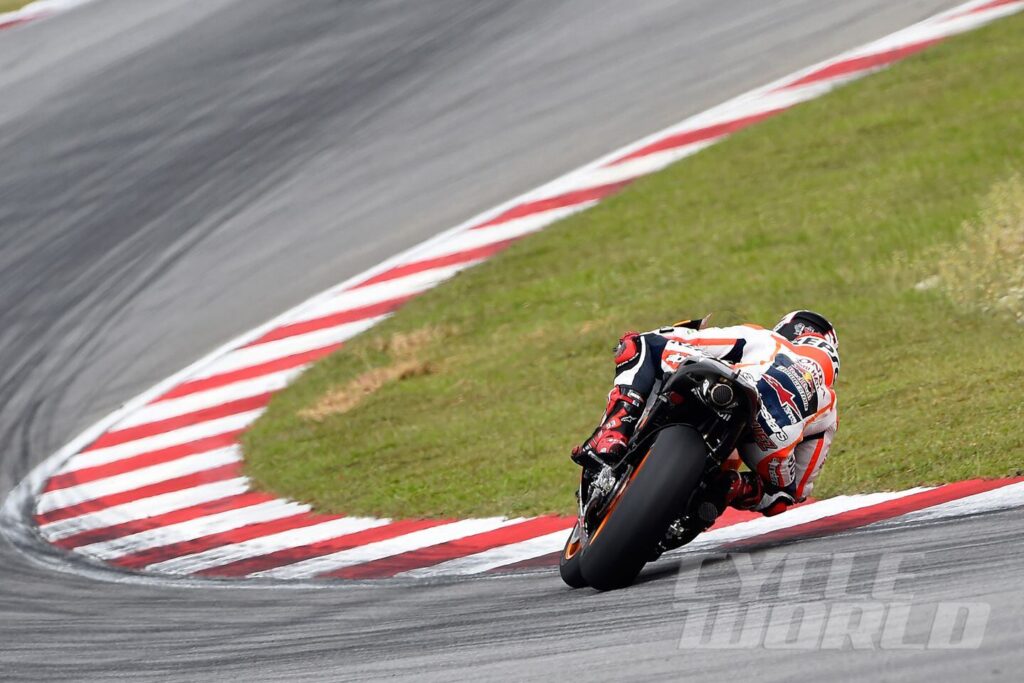
Audience
- Sentiment: Concerned
- Political Group: Neutral
- Age Group: 25-45
- Gender: Male
Overview
- Jorge Martin’s crash during testing has sparked a debate on rider safety in MotoGP.
- A dispute between Aprilia Racing and Michelin over tire conditions highlights accountability issues in motorcycle racing.
- There is a call for better communication and safety protocols to prevent future accidents.
The MotoGP Crash Controversy: A Deep Dive into Safety and Accountability
On a sunny day in February, the air of excitement and anticipation filled the Sepang International Circuit in Malaysia. Riders and teams from around the world were ready to push their limits. Among them was MotoGP champion Jorge Martin, a talented rider known for his speed and skill. However, what was supposed to be an ordinary day of testing soon turned into a nightmare when Martin suffered a severe crash that landed him in surgery. This incident has sparked a heated debate about the cause of the crash, who is to blame, and how rider safety can be improved in the world of MotoGP.
The Crash: What Happened?
To understand the severity of the situation, let’s look at what happened during that testing session. Martin was riding at high speeds when he lost control of his bike and crashed hard. The impact was serious enough to leave him with multiple fractures, requiring him to undergo surgery. For fans and fellow riders, it was a shocking reminder of the risks associated with high-speed motorcycle racing.
This crash was no ordinary accident; it was a wake-up call for the entire MotoGP community. Riders, teams, and fans all felt the repercussions, particularly knowing how quickly accidents could happen on the track. But when the dust settled, the conversation shifted from the incident itself to what caused it.
The Finger-Pointing Begins
After the accident, March—now nursing his wounds and looking towards recovery—was eager to get back on his bike. However, questions about the crash began to surface almost immediately, sparking a war of words between two key players: Aprilia Racing and Michelin, the tire manufacturer used by all MotoGP teams.
Aprilia’s team principal, Massimo Rivola, voiced his frustrations, stating that their data contradicted Michelin’s analysis. Michelin had attributed the crash to “suboptimal tire conditions” which made it difficult for riders to maintain control while racing. However, Rivola and his team believed that their evidence suggested otherwise, leading to a growing sense of mistrust.
Let’s break this down a little. Michelin argued that the tires Martin used might not have been in optimal condition during the crash. However, Aprilia claimed that the information they collected pointed to something else. This is significant because if the tires were indeed compromised, it could mean that other riders were also at risk—something no one wants to hear.
The Impact of Tire Conditions
Tires are a crucial component of motorcycle racing. They provide the necessary grip and control that riders rely on to navigate tight corners and maintain high speeds. If the tires are not performing well, it can lead to disastrous outcomes, as seen in Martin’s case.
Michelin’s motorsport chief, Piero Taramasso, acknowledged that there were discrepancies in tire temperatures, which could have played a role in the accident. While some tires may have been too warm, others may have been too cold—affecting their performance. Taramasso’s comments point to an inherent issue with tire management on the race day, especially under demanding conditions.
It’s also important to note that the Sepang circuit is known for its challenging weather, which can include heat and humidity. These factors can change tire performance significantly, and riders must adapt quickly. Unfortunately, if that adaptation does not happen flawlessly, the results can be devastating.
Growing Concerns and the Call for Change
The dispute between Aprilia and Michelin is more than just another day of finger-pointing in sports; it brings to light larger questions about safety protocols in MotoGP. According to Rivola, the increasing number of crashes in recent years has become a critical issue that demands immediate attention.
He called for urgent discussions among all teams to address the safety concerns that have arisen from various crashes—counting Martin’s as a shocking reminder of how quickly things can go wrong. After all, rider safety should always be the top priority, not just for the riders but for the teams, fans, and the sport itself.
Even though both parties seem to agree on the importance of prioritizing rider safety, the lack of a unified understanding of the crash data has fueled tensions within the paddock.
The Uncertainty of Recovery
As Jorge Martin starts his recovery journey, many fans are left wondering what this means for the start of the MotoGP season. His timeline for recovery is still uncertain, making the situation even more concerning for fans and teammates alike. With every athlete, their resilience and mental fortitude become as crucial as their physical recovery after a severe injury.
For Martin, returning to the track means not just healing physically but also coming to terms with the mental aspect of crashes and injuries. Contending with the fear of falling again can be as daunting as the physical challenges he must overcome.
The Bigger Picture: What Can Be Done?
So where does all this leave MotoGP? It’s clear that both the tire manufacturers and the teams must work together more closely to ensure that safety comes first. The sport has come a long way in terms of technology and safety measures. Still, incidents like Martin’s crash remind us that there is room for improvement.
In addition to better communication between teams and tire manufacturers, one potential solution could be better protocols for tire testing and monitoring during races. Perhaps creating standardized guidelines could help all teams have a clearer understanding of tire performance on race day.
Furthermore, the sport might benefit from involving riders in safety discussions more actively. They are the ones who experience the track firsthand; their insights could illuminate issues that teams and engineers may overlook.
Conclusion: A Call to Action for MotoGP Fans
As we move closer to the new racing season, the question remains: how can the MotoGP community unite to ensure the safety of its riders? The recent crash involving Jorge Martin has opened up a crucial dialogue that should not be brushed aside. Fans, teams, and manufacturers must engage in this discussion to create a better and safer environment for all.
What do you think about the current state of rider safety in MotoGP? How can teams and manufacturers work together to prevent accidents like Martin’s in the future? Share your thoughts in the comments below! Your voice matters in shaping the future of this thrilling sport.




